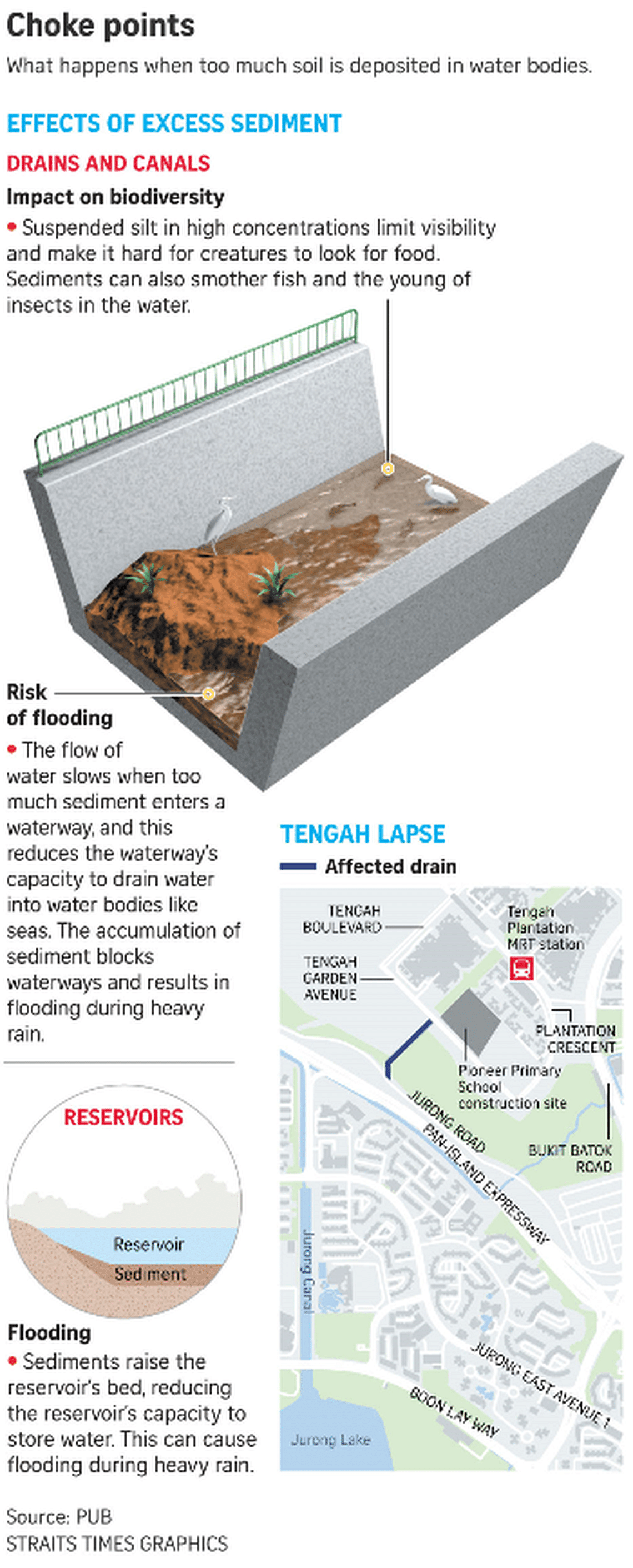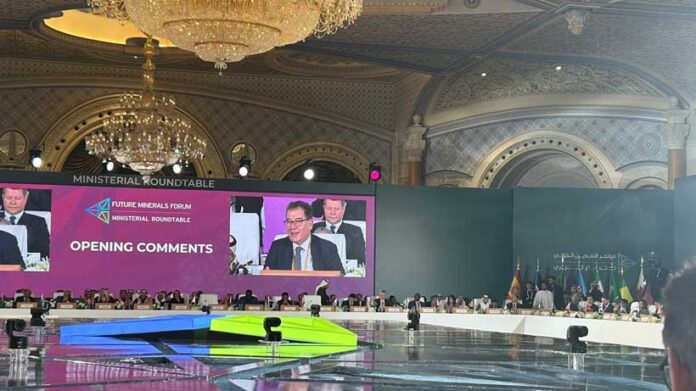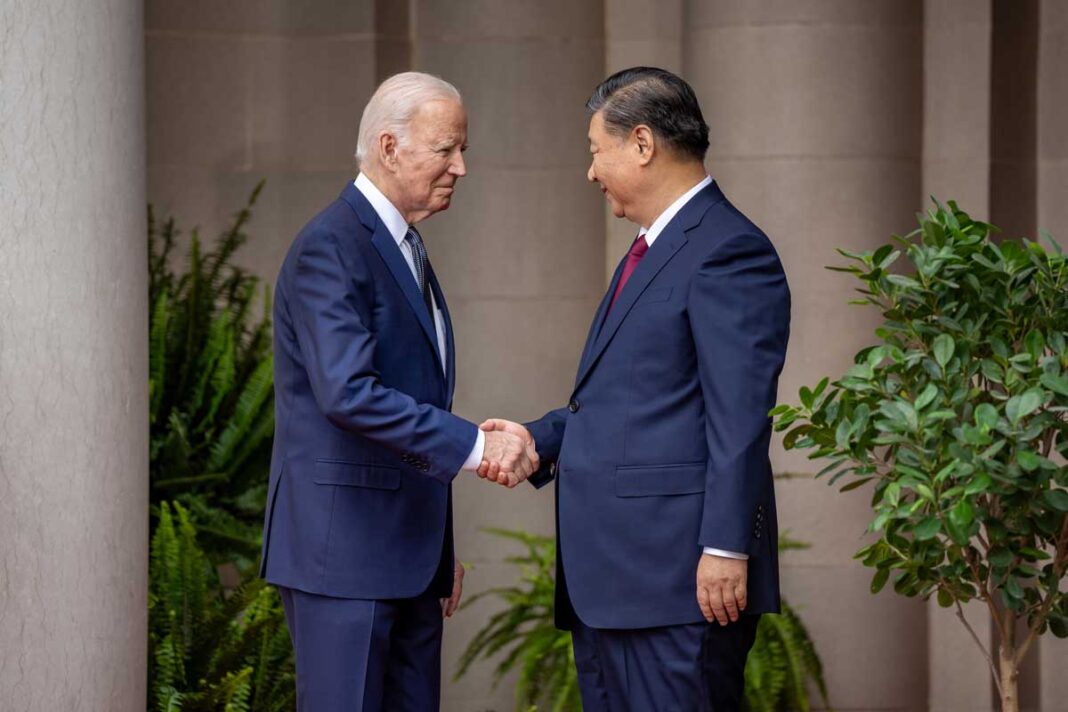Contractor under probe for flouting environmental pollution laws at Tengah worksite
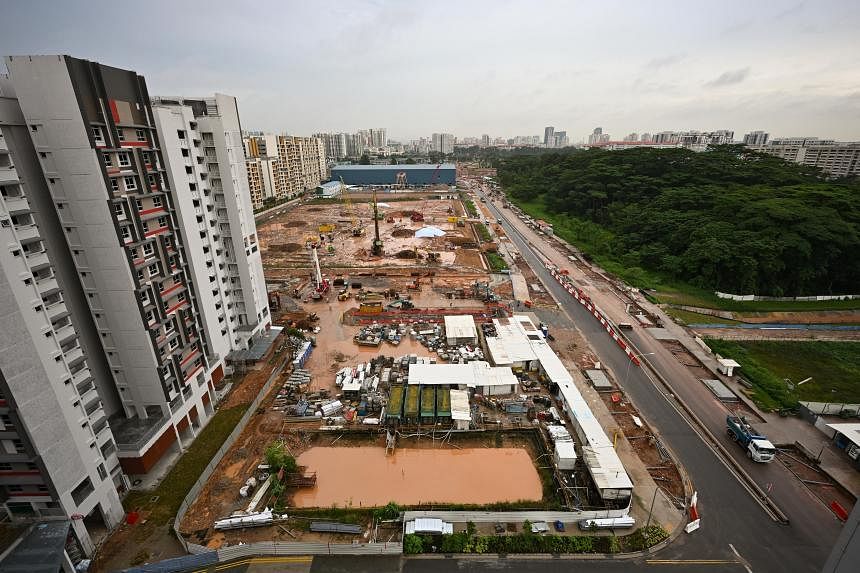
The violations were first publicised in December 2023 by Mr Jimmy Tan, who traced a trail of muddy water in Jurong Canal on bicycle to its source at the construction site.
ST PHOTO: LIM YAOHUI
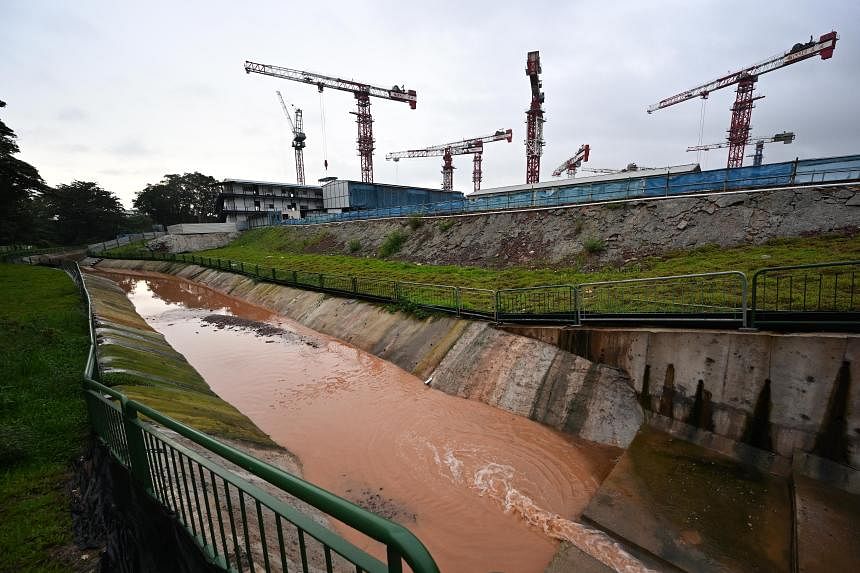
Silty discharge flowing into a drain from a Tengah construction site.
ST PHOTO: LIM YAOHUI
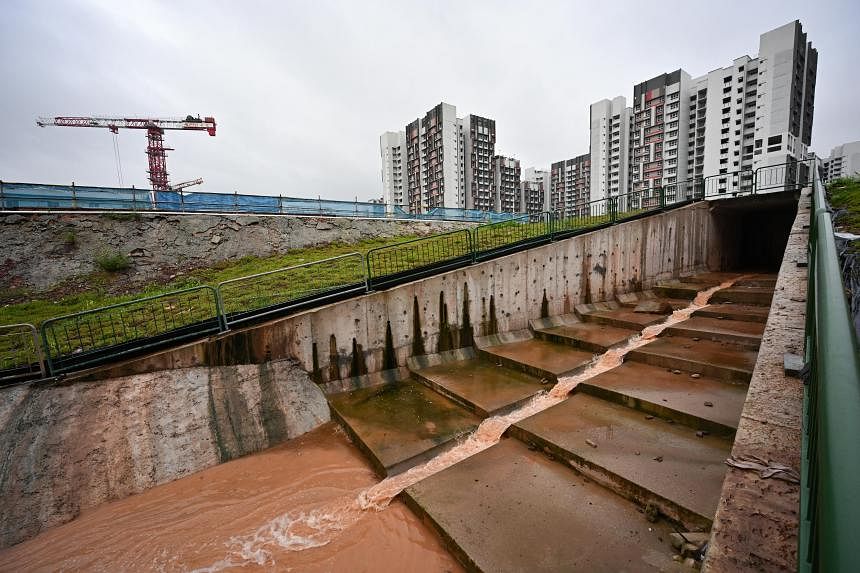
When PUB conducted its own checks recently, it found that the firm had started unauthorised earth works at the construction site.
ST PHOTO: LIM YAOHUI
Ang Qing
UPDATED
1 HOUR AGO
SINGAPORE - A contractor hired to build a new primary school in Tengah is under probe for flouting a raft of rules aimed at minimising the impact of construction work on the environment.
The violations racked up by contractor Trust-Build Engineering & Construction include starting works without getting approval from national water agency PUB for earth control measures.
Earth control measures are steps taken to ensure that silt from construction sites do not run into the waterways.
Trust-Build was appointed by the Ministry of Education (MOE) to carry out works for the upcoming Pioneer Primary School. Pioneer Primary will relocate from Jurong West to Tengah in 2026 and be the first primary school in the area.
In response to queries, an MOE spokesman said Trust-Build also “did not implement adequate earth control measures on site, which had resulted in the discharge of silt to the surrounding area and water bodies”.
He added that MOE will work closely with the contractor, the appointed consultant team and the government agencies to make sure no rules are flouted at the worksite.
The violations were first publicised in December 2023 by food delivery rider and nature enthusiast Jimmy Tan, 50, who traced a trail of muddy water in Jurong Canal on bicycle to its source at the construction site
In a video taken by Mr Tan during his second visit to the Tengah work site on Dec 25, piles of excavated soil can be seen uncovered and exposed to the elements.
Mr Tan, who has been involved in campaigns calling for the conservation of Tengah and other forests in Singapore, said: “If the sediment was at a less ecologically sensitive area, I would not have thought twice.
“So, I did my part as an active citizen concerned about the environment and gave feedback about lapses so that they don’t happen again.”
When PUB conducted its own checks recently, it found that the firm had started unauthorised earth works at the construction site, said Mr Yeo Keng Soon, the PUB Catchment and Waterways Department director.
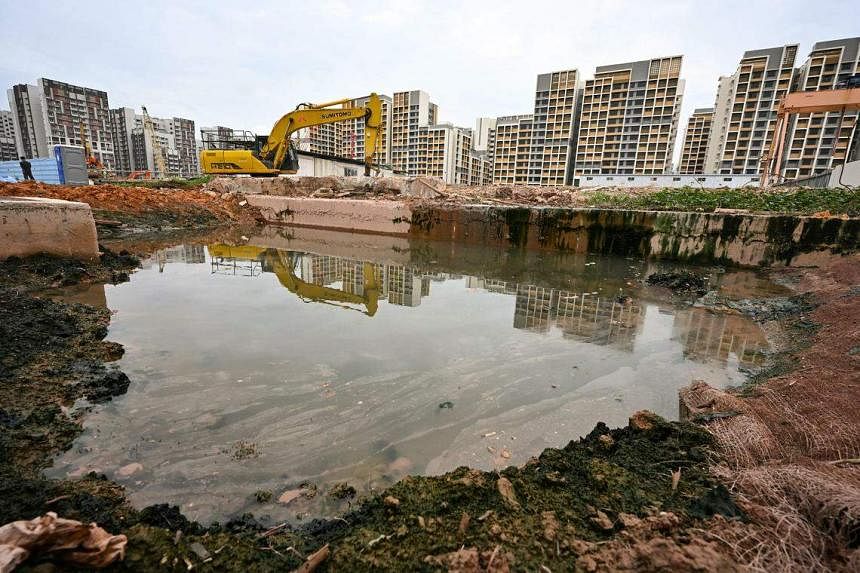
The construction site of Pioneer Primary School on Jan 3, 2024.
ST PHOTO: LIM YAOHUI
He added that the contractor also failed to put in place steps to prevent silty discharge like silt fences, cut-off drains, holding ponds and treatment plants, he added.
Mr Yeo said: “The contractor is rectifying the lapses at the site and will need to implement the necessary earth control measures by the end of January 2024.”
He added that “enforcement action” will be taken against the contractor, but did not give details.
PUB has, so far, not found anything out of the ordinary in Jurong Lake’s water quality – where the water from the worksite drains into after making its way through the canals, he said.
National Parks Board officers also did not find any impact on the flora and fauna at Jurong Lake Gardens during their checks.
With the recent rainy weather, contractors have been reminded to put in place steps to contain and treat silty water at construction sites before it is discharged into drains, said Mr Yeo.
The Housing Board has also advised contractors to inspect the drainage system within and around the construction sites daily in the light of the rainy season.
A Trust-Build Engineering and Construction spokesman, in response to queries, said the firm has submitted information to the authorities and had no further comments.
Engineering and environmental experts The Straits Times spoke to said dumping large quantities of soil into drains and water bodies can lead to flash floods during heavy rain.
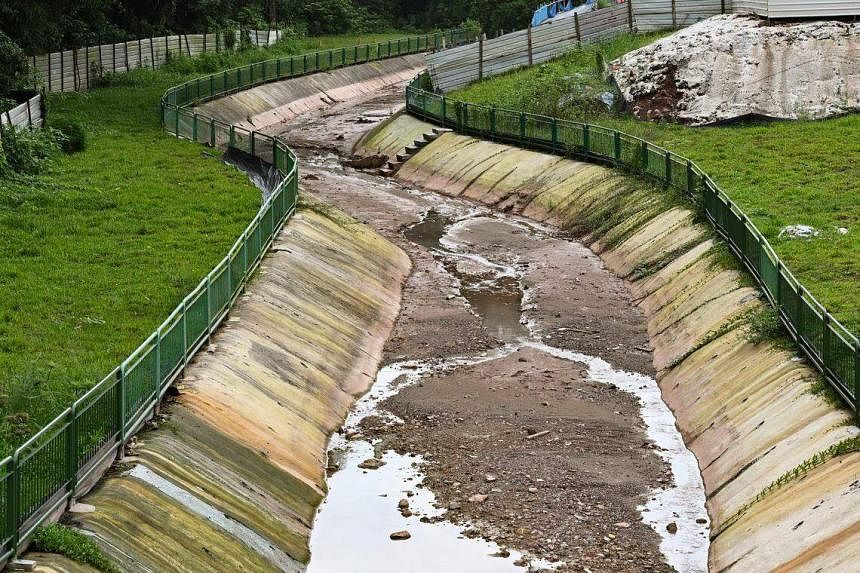
Sediment in a drain originating from discharge from a Tengah construction site on Jan 3
. ST PHOTO: LIM YAOHUI
Mr David Ng, chairman of the civil and structural engineering technical committee at the Institution of Engineers, Singapore, said sediment that has accumulated and settled in a waterway makes it harder for water to drain away.
“This can lead to flooding, as the water from upstream cannot flow fast enough,” he said.
Associate Professor Leong Eng Choon, from the School of Civil and Environmental Engineering at Nanyang Technological University, said the flooding can happen similarly in a reservoir because its capacity to store water will be reduced when too much sediment is discharged into it.
He said: “Regular dredging and maintenance of the waterway to remove the sediments is needed.”
Environmental consultant Tony O’Dempsey said fine silt washed out from construction sites can also make the water murky, and make it harder for fish and birds like kingfishers to find food. Silt can also smother aquatic life.
He said: “Sand deposits that originate from these sites are a long-term problem because these do not wash away easily. This impacts habitat for freshwater crabs, tadpoles, dragonfly larvae, effectively turning the stream bed habitat into a desert for some time.”
Mr O’Dempsey said construction sites are expected to place covers during wet weather to ensure that loose soil is not washed into the drain.
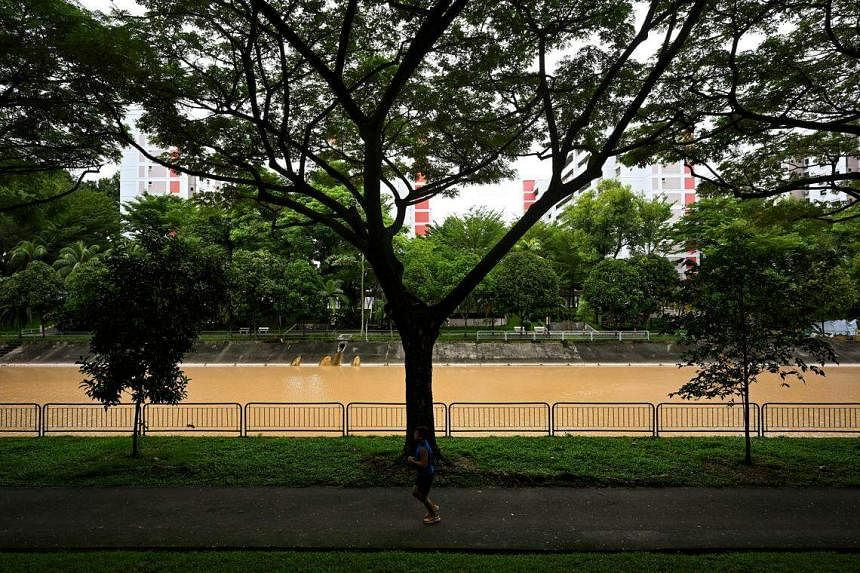
Regular users of the park connector next to Jurong Canal said the water is usually brown and murky.
ST PHOTO: LIM YAOHUI
Six people who regularly use the park connector along Jurong Canal and Jurong Lake Gardens – located south of the Tengah worksite – on Jan 3 said the water in the canals and lakes in the area has been brown and murky for as long as they can remember.
One of them, retired noodle supplier Ng Bin San, 64, who has been exercising next to the canal for the past two years, said he and his friends have wondered about the colour of the water. Speaking in Mandarin, he said: “Sometimes we can see fish and terrapins, but usually the water is just brown.”
When The Straits Times went to check on a drain that channels water into Jurong Lake on Dec 27, 2023 and Jan 3, mounds of sediment – believed to have come from construction sites in the area and the partially hoarded up MOE site just metres away – were seen caked up in the waterway.
Anyone who comes across silty discharge or pollution in drains and canals can call the PUB 24-hour hotline on 1800-2255-782, and provide details of the location as well as photos and videos to help investigations.
Those found guilty of conducting unauthorised works that discharge silt into drains can be fined up to $50,000 under the Sewerage and Drainage Act.
